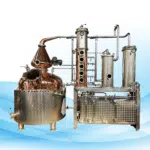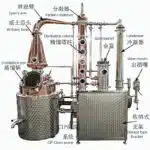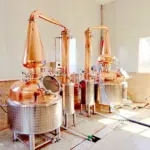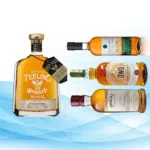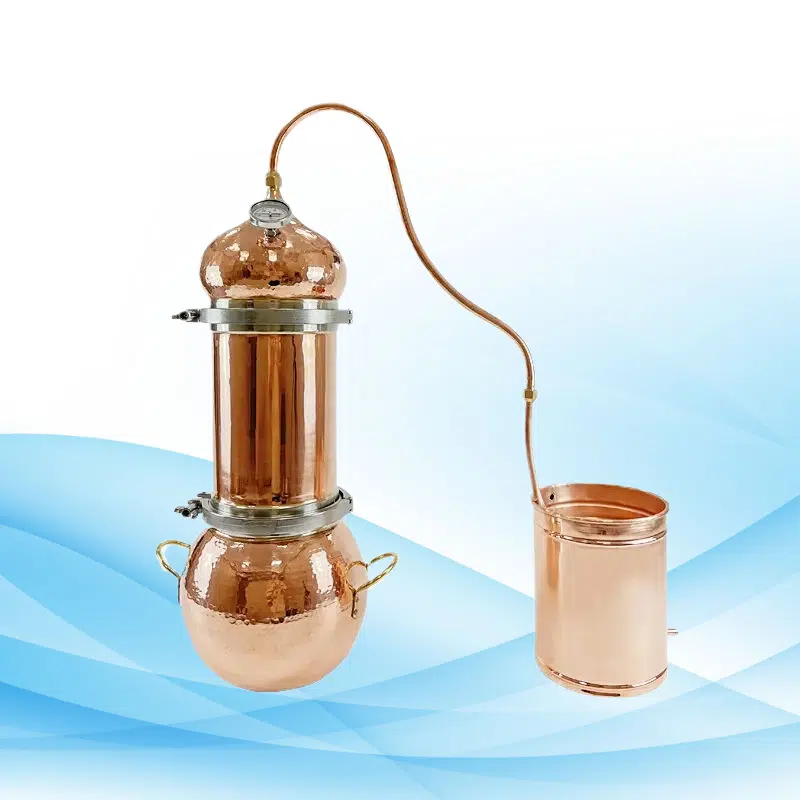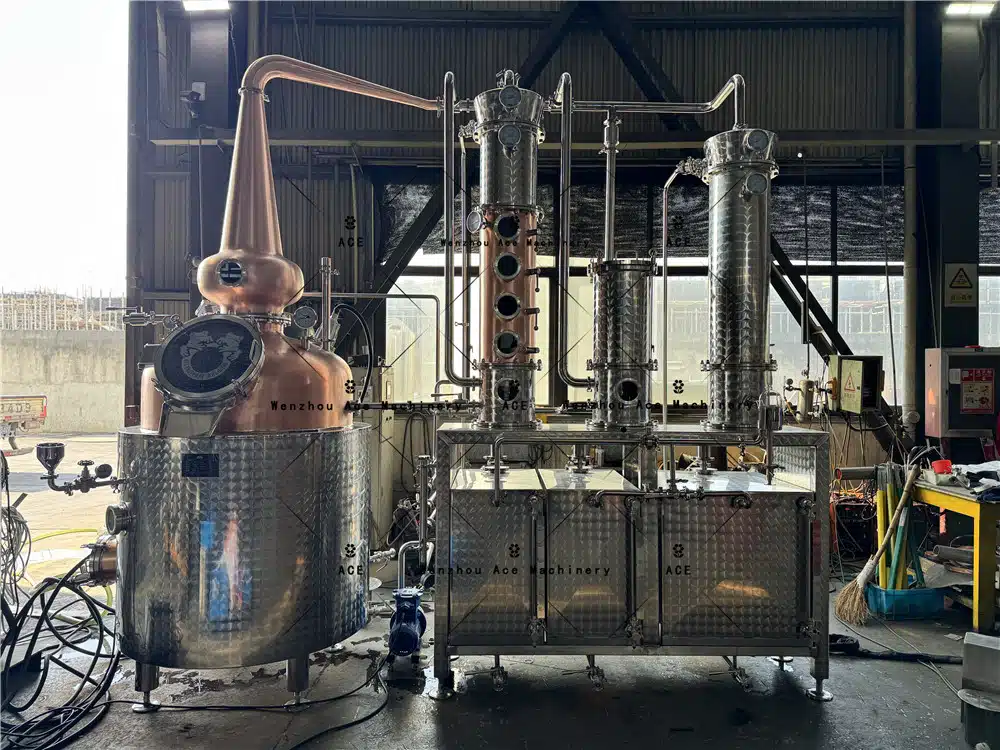Opening a whiskey distillery has quickly become a popular business option as it promises not only a product but a brand experience also. But starting a whiskey distillery calls for one to have a well-elaborate business plan, knowledge of regulations that are involved, lots of money upfront, and a business brand strategy. In this guide, we will take you through the process of establishing a whiskey distillery, and what factors need to be taken into account when doing so.

Market Research and Business Strategy
It goes without saying that such research is the crucial element of any undertaking. Well, it is the same with a whiskey distillery, as you will have to know these things before erecting the plant.
Target Market Analysis
Apply the relevant segmentation methods in defining the market for your whiskey distillery. It also entails the customer’s profile, preferences, and whiskey consumption. What are the trends of this product in the geographic location? How do you market whiskeys in your area? Are there areas where a combination of single malt and bourbon whiskeys are being consumed?
Don’t forget to consider other players in the industry you have chosen. Have there been some operational distilleries, or is there a place that you can fill in and why? More than ever, you must learn to set yourself apart, be it through flavors, methods of distilling, or the narratives behind the brand.
Business Plan Development
Once you have explored the market, write an all-encompassing business plan. This will act as a guide for your whiskey distillery. The business plan should include various aspects like market strategies, potential customers, and even potential revenue models with possible earnings. The key elements of a distillery business plan are as follows:
- Mission Statement: Write up a brief document detailing the vision and values of the business plan.
- Market Analysis: Synthesize the target market and the competitive market.
- Product Line: Give a description of the categories of whiskey that you will offer.
- Marketing Strategy: This comprises all the methods you intend to use in reaching your target market. It includes both online and offline methods.
- Financial Plan: Explain the projected startup costs, running expenses, and estimated income in the coming 3–5 years.
Laws, Regulations, and License Application
As is with eating, most laws against distilling whiskey are rotten laws, so it is best to understand what is expected locally, in the state, and nationally before you begin your operations.
Understand Local Laws and Regulations
The laws that concern the manufacture and the sale of alcoholic drinks change according to countries and geographical regions. Such laws govern many aspects, especially redistricting the maximum levels of production, describing certain substances or raw materials, and reaching requirements for labeling and distributing. For example, in the U.S., the production of whiskey falls under the jurisdiction of the Alcohol and Tobacco Tax and Trade Bureau (TTB). Avoid any breach of these regulations, as the penalties are harsh, including shutdowns and fines.
Apply for a License
Obtaining the requisite licenses is among the most necessary procedures while setting a whiskey distillery. This may encompass:
- Federal License: In relation to states, you will require a federal distilled spirits permit from the TTB based in the U.S.
- State Licenses: There are some state-level licenses and permits you may apply for, depending on the geographical location of the distillery.
- Local Permits: Development control permits or city construction or demolition permits should be obtained for the purpose of operating businesses within the city or county governments.
The process of application is frustrating and can be long, taking a few months to more than a year. It is important to note that this process should be initiated as early as the application can be done to avoid any delays.
Site Selection for the Purposes of Construction
The panna cotta distillery site is yet another important factor affecting the success of the business. It relates not only to production logistics, but also to your company’s brand management as well as customer satisfaction.
Look for the nearest raw materials, grains, yeast, and water and for the most appropriate site in terms of accessibility for transportation of products and for equipment and stocked area. Also, some distilleries offer tours, so a beautiful or interesting location might as well cater to the clients.
Supply of Equipment for a Distillery
It is quite logical that the equipment used for whiskey production is relatively expensive and should therefore be included in the business plan. Equipment includes:
- Mash Tun: A vessel or apparatus for mixing grains with water in order to obtain sugars.
- Fermenters: Tanks into which yeast is added to the mash in order to produce alcohol.
- Distillation Stills: Classified into two; pot stills (for smaller orders of whiskey) and column stills (for a bigger market).
- Aging Barrels: Usually landed in oak barrels, which lend different tastes.
- Bottling and Packing Machines: Before sealing, the last processes involve bottling and packing.
There is a need to purchase decent-quality equipment to produce quality and consistent whiskey products.
Brand Development
With the proliferation of competition in the whiskey industry, it is essential to create a distinctive and lasting impression of the brand. A brand is more than a container or a branding image; it’s the ideals and the narrative that concerns the product. Please keep in mind the following factors when creating your brand:
Brand Positioning
What is your strongest selling proposition in your whiskey? Is it the quality of whiskey distillation, the special ingredients used, or even the history of the whiskey distillery?
Brand Packaging and Labeling
Make sure that the design of whiskey bottles conveys a message that is unique to the audience you intend to target.
Brand Development, Marketing, and Promotion via Social Media
Do not shy away from making a major investment in an online presence. Social media channels, a professional website, and email marketing will go a long way in more effectively reaching a targeted audience.
Cost Incurred In Setting Up A Whiskey Distillery
If you wish to establish a whiskey distillery, you will require a lot of capital investment at the beginning. Some of the major expenses that you have to plan for include:
- Licenses and Permits: Depending on where you are situated, it can range from a couple of thousands to several tens of thousands of dollars.
- Equipment: Expect to pay from $100,000 to $1 million USD plus for some high-quality distilling equipment.
- Location: The cost of acquiring or renting a property can vary geographically.
- Raw Materials: Budget for the purchase of grains, yeast, and barrels, etc.
- Staffing: Distillers, marketers, and administrative workers are among the skilled personnel you will need to recruit.
FAQs
What is the first step in starting up a whiskey distillery?
The first action is to perform extensive market analysis regarding the target clients, rivals, and potential sales. This is followed by creating a business plan, which states what the business is about, what products it will offer, how it will attract clients, and potential profits.
What should be taken into account before setting up a plant?
When choosing a location, consider the distance from raw materials and the market for finished products, transportation accessibility, zoning laws, and the scale of the building required for manufacturing and storing products.
Which key equipment is used for starting a whiskey distillery?
The major equipment required includes mash tuns, fermenters, distilling stills (either pot stills or column stills), maturation barrels, and counter pressure bottle fillers.
Are there any excess levels of investment in opening a whiskey distillery?
There is no particular figure for the startup cost, but it can range from $500,000 to over $1 million. This includes costs for permits, facilities, equipment, and staff.
How long does it take to open a whiskey distillery?
It may take 12–36 months to establish a whiskey distillery, covering the processes of licensing, construction, and equipment installation.
WHY CHOOSE US?
While setting up a whiskey distillery is not easy, it is still worthwhile. It is advisable to settle on a distillery partner with skills in distillery consulting, procuring equipment, and branding. We provide:
- Expert Consultation: All segments are well-administered, from market assessment to legal issues.
- High-Quality Equipment: Access to quality distilling equipment is provided.
- Branding Support: We assist through the process of constructing a development and awareness campaign to attract the targeted audience.
It is important to observe that starting a whiskey distillery can take a lot of time, money, and energy. However, with proper preparation and assistance, it is a very fruitful business venture. Following the procedures in this guide will make it easier for you to have an elegant whiskey brand that will stand the test of time.



